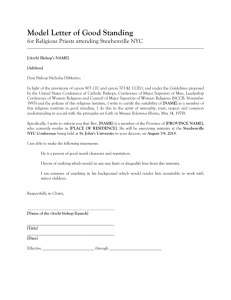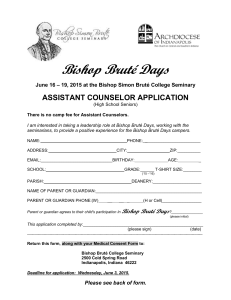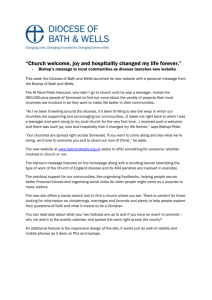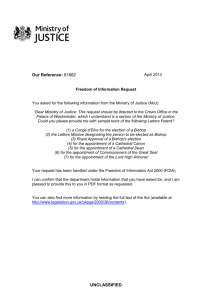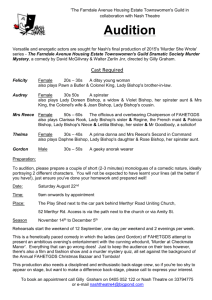The Biography of Bridget Bishop
advertisement
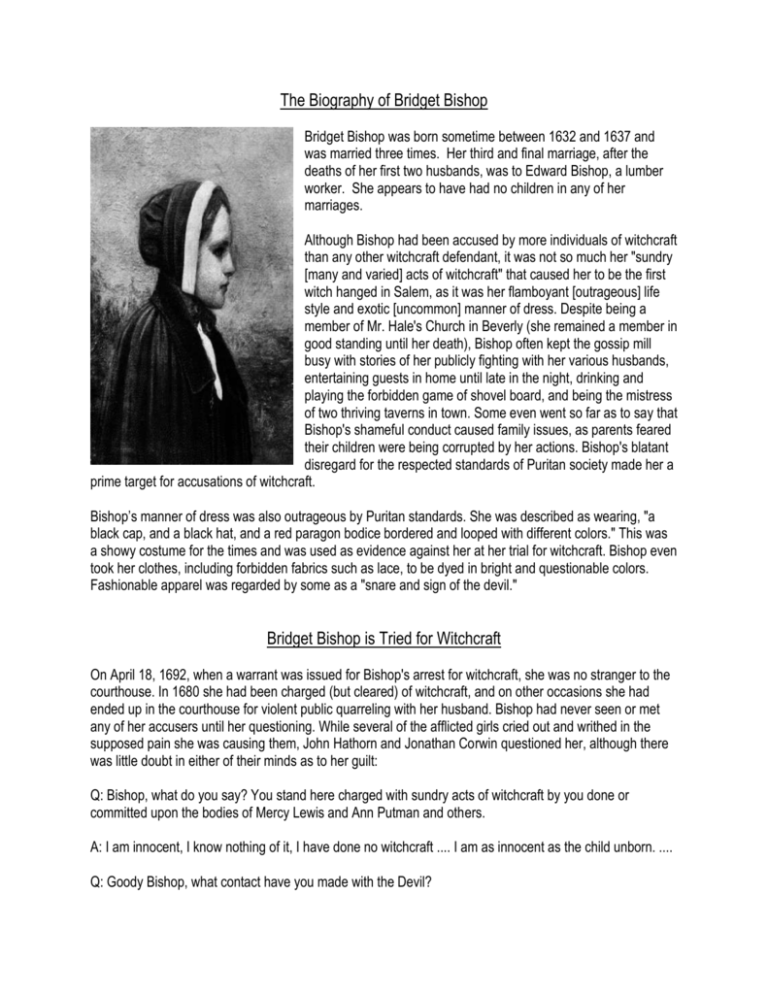
The Biography of Bridget Bishop Bridget Bishop was born sometime between 1632 and 1637 and was married three times. Her third and final marriage, after the deaths of her first two husbands, was to Edward Bishop, a lumber worker. She appears to have had no children in any of her marriages. Although Bishop had been accused by more individuals of witchcraft than any other witchcraft defendant, it was not so much her "sundry [many and varied] acts of witchcraft" that caused her to be the first witch hanged in Salem, as it was her flamboyant [outrageous] life style and exotic [uncommon] manner of dress. Despite being a member of Mr. Hale's Church in Beverly (she remained a member in good standing until her death), Bishop often kept the gossip mill busy with stories of her publicly fighting with her various husbands, entertaining guests in home until late in the night, drinking and playing the forbidden game of shovel board, and being the mistress of two thriving taverns in town. Some even went so far as to say that Bishop's shameful conduct caused family issues, as parents feared their children were being corrupted by her actions. Bishop's blatant disregard for the respected standards of Puritan society made her a prime target for accusations of witchcraft. Bishop’s manner of dress was also outrageous by Puritan standards. She was described as wearing, "a black cap, and a black hat, and a red paragon bodice bordered and looped with different colors." This was a showy costume for the times and was used as evidence against her at her trial for witchcraft. Bishop even took her clothes, including forbidden fabrics such as lace, to be dyed in bright and questionable colors. Fashionable apparel was regarded by some as a "snare and sign of the devil." Bridget Bishop is Tried for Witchcraft On April 18, 1692, when a warrant was issued for Bishop's arrest for witchcraft, she was no stranger to the courthouse. In 1680 she had been charged (but cleared) of witchcraft, and on other occasions she had ended up in the courthouse for violent public quarreling with her husband. Bishop had never seen or met any of her accusers until her questioning. While several of the afflicted girls cried out and writhed in the supposed pain she was causing them, John Hathorn and Jonathan Corwin questioned her, although there was little doubt in either of their minds as to her guilt: Q: Bishop, what do you say? You stand here charged with sundry acts of witchcraft by you done or committed upon the bodies of Mercy Lewis and Ann Putman and others. A: I am innocent, I know nothing of it, I have done no witchcraft .... I am as innocent as the child unborn. .... Q: Goody Bishop, what contact have you made with the Devil? A: I have made no contact with the Devil. I have never seen him before in my life. When asked by one of her jailers, Bishop claimed that she was not troubled to see the afflicted persons so tormented, and could not tell what to think of them and did not concern herself about them at all. But the afflicted girls were not Bishop's only accusers. Her sister's husband claimed that "she sat up all night conversing with the Devil" and that "the Devil came bodily into her." With a whole town against her, Bishop was charged, tried, and executed within eight days. On June 10, as crowds gathered to watch, she was taken to Gallows Hill and executed by the sheriff, George Corwin. She displayed no remorse and professed her innocence at her execution. Excerpted from: http://www.law.umkc.edu/faculty/projects/ftrials/salem/SAL_BBIS.HTM Text modified by Stephanie Woodhams and Alexis Nesper on August 5, 2008. www.salemwitchmystery.com/favorite.html
